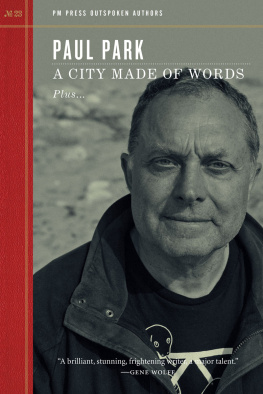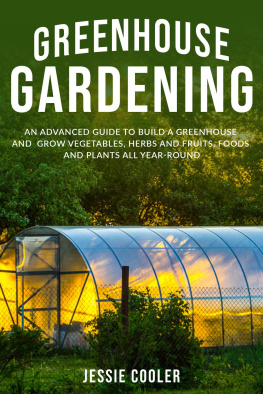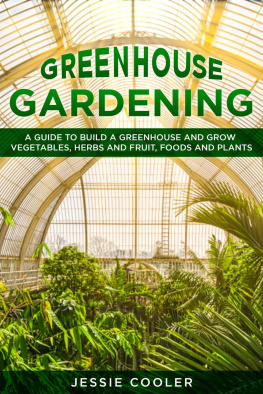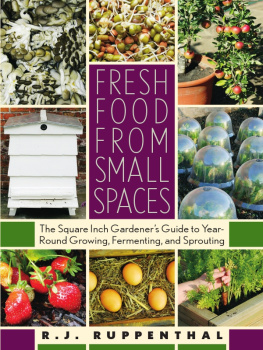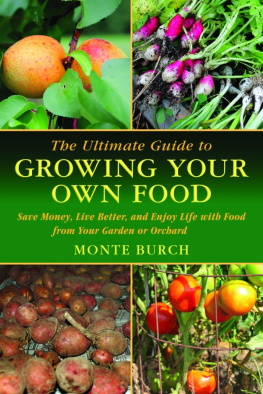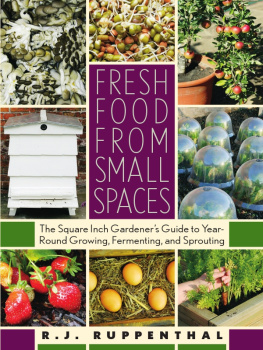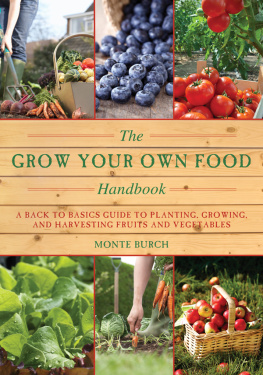More Food From Small Spaces
Growing Denser, Deeper, Higher, Longer Gardens
Margaret Park

Copyright 2013 by Margaret Park
Illustrations 2013 by Margaret Park
All rights reserved. No part of this book may be used or reproduced in any manner whatsoever without written permission from the publisher.
For information contact:
Great River Books
161 M Street
Salt Lake City, UT 84103
www.greatriverbooks.com
eBook ISBN 978-0-915556-45-8
Library of Congress Cataloging-in-Publication Data
Park, Margaret, 1954
More food from small spaces : growing denser, deeper, higher, longer gardens /
Margaret Park. -- 1st ed.
p. cm.
ISBN 978-0-915556-42-7
1. Vegetable gardening. 2. Small gardens. 3. Square foot gardening. I. Title.
SB321.P355 2013
635--dc23
2012044879
Printed in the United States of America
Contents
Preface
A few years ago our family put an addition on the back of our house, and in the course of construction, most of the grass and plantings in our backyard were destroyed. We were faced with the task of designing our backyard from scratch. This was not an unwelcome development. There had not been much aesthetic sense or maturity to the backyard landscaping wed inherited from the previous owners. Our house is very close to downtown in a good-sized American city. Needless to say, its dimensions are very limited, especially after the addition was completed. I have always loved gardening, and especially loved growing flowers, ornamental plants and creating peaceful outdoor resting spaces. My husband is fond of building rock walls and paths, so our thoughts naturally turned to creating a serene and beautiful oasis in the city. Then in 2008 with economic downturn and the ensuing stagnation, our dreams of a peaceful oasis in the city, turned toward another kind of peace the greater security of knowing we could grow a lot of our own food.

Now, we are glad we chose this direction. The cost of food has steadily risen and our income has not followed apace. This is a familiar story for many of us. And if you have picked up this book because youre feeling financially pinched, I want to assure you that even if you have just a small patch of dirt available to you even as little as 8 16 feet you can grow a lot of your own vegetables and save money, especially with current food prices and the likely prospect of future price increases.

Using these savings for other purposes every month will seem a great reward for your garden labors. As for a beautiful backyard, weve found that vegetable gardening in such a small space demands that order and structure be emphasized. At this scale, our vegetable garden has its own charm and exudes a vibrance and abundance that looks close enough to beautiful for our tastes.
Over the years, through various moves across the country, Ive grown vegetables on a number of different properties. My prior vegetable garden in a rural area was 25 30 feet. Ive now learned how to grow more food in my current 8 24 foot plot than I used to grow in three times this space. Over the last four years Ive experimented and figured out how to make small space gardening work. And now I think Ive got it! To express these discoveries in as few words as possible: you have to plant denser, deeper, higher for longer. Its all about cramming as many plants as possible into an alloted space for a longer part of the year and the vertical supports and soil fertility that enables this tight grouping to flourish.
This book is essentially a how-to guide that includes all the information youll need to grow your own vegetable supply: from how to maintain soil fertility to how to cut and snap together inexpensive, durable plant towers out of pvc plastic pipes and pipe connectors. I also show how to make a portable/storable greenhouse that will add months of life and harvesting to your vegetable garden.
This is not meant to be a comprehensive book on the technical and scientific aspects of vegetable gardening. I do not delve deeply into soil composition and technical matters of plant growth. There are many fine books that present more fully researched technical information than what I offer here. I am motivated to write this book because Ive been consistently successful with the methods I offer and have come up with some original solutions that I dont believe are offered elsewhere. In fact, Ive been amazed at how much food we now grow in our tiny urban backyard. These ideas will be of most use to the urban and suburban gardener, but even rural home vegetable growers may appreciate the many advantages to keeping the garden small. Less space means less work, especially for the initial setting up of the vegetable patch. Small spaces require less weeding and watering. Large vegetable gardens require walking pathways that need weeding and maintenance as much as the planting beds. Water, especially in mechanically watered spaces, is often wasted in watering pathways. Hand watering a large space is a lot more time consuming than a small space.
The money savings is only one of the rewards of planting a garden. Its no secret that the activities involved in growing vegetables can be deeply satisfying. Gardening is one of the most popular hobbies in America. Theres something inherently inspiring about the great benevolence of plant life in our wide and interconnected world. Becoming a part of this ongoing, seamless whole by placing some seeds in the ground and caring for them as they grow makes us nurturers as well as consumers. Its so ultimately trusting and optimistic and grounding to plant, not to mention the natural pleasure of being outside in sunshine and fresh air. It seems basic to our human nature to care for the things that are destined to become part of us.
Growing up in Brooklyn New York, I remember the backyard gardens I could view from the rear windows of my parents railroad apartment three stories up. Cultivating vegetables in New York City seemed very foreign and old fashioned to me then. Actually, it was foreign, since the vegetable gardens were mostly planted by immigrant families extending their cultural values and cuisines into this new country. Living in this ethnic neighborhood, I saw vegetables in yards that never could be seen in the local supermarkets. I suppose thats why people grew them. I only later in life learned the names of kohlrabi, arugula, and trombetta squash. Now, growing food is not at all foreign to me, its become an all around nautural and pleasurable activity.

I believe there are great benefits for our health in eating what the garden provides. When weve grown the food ourselves, we know exactly whats gone into the growing process. We can avoid the toxic pesticides and herbicides that are often applied on commercially grown crops. We can avoid the genetically modified plants that are more and more being introduced to consumers. We can select the varieties of seeds we want to plant. We can even choose heirloom, open pollinated seed varieties and collect our own seeds for future crops.







